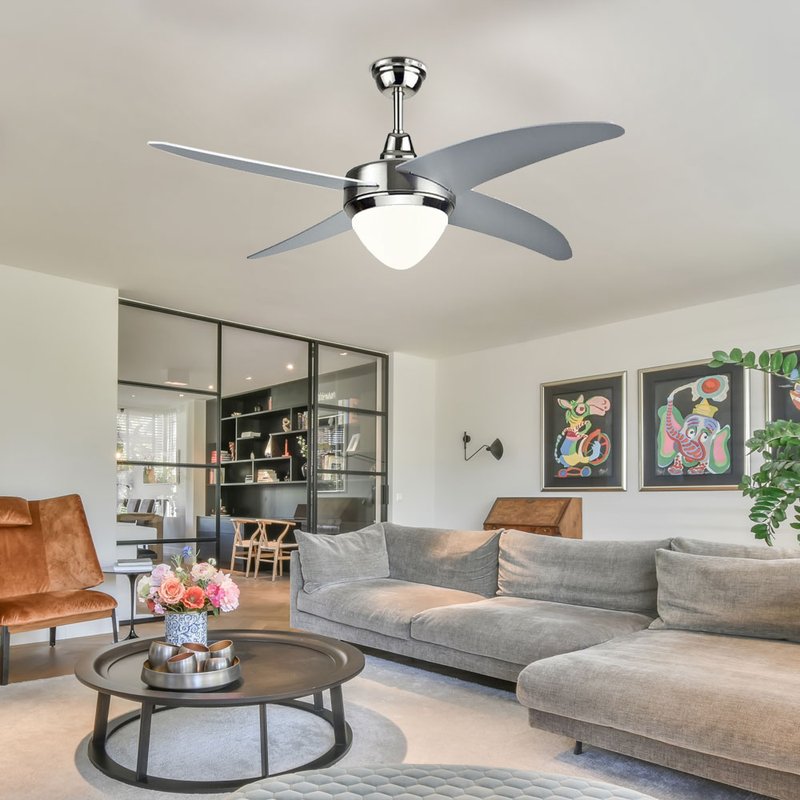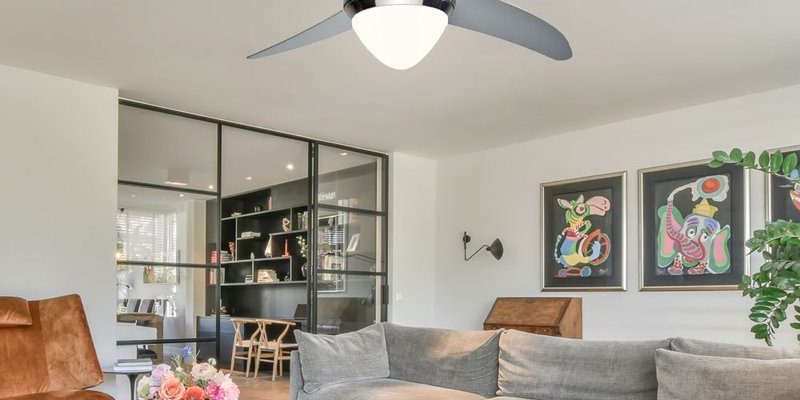
The Hampton Bay brand is a big name when it comes to ceiling fans you’ll find at stores like Home Depot. Their remotes are supposed to be easy—press a button, change the speed, switch the light. But if your fan is perched way up there, does the remote still work? Or does the height mess with the signal? Let me walk you through that, so you never have to drag out the ladder again.
How Hampton Bay Ceiling Fan Remotes Work
Let’s start with how these remotes actually do their job. A Hampton Bay ceiling fan remote works a bit like a TV remote—just less Netflix and more airflow. Inside your fan, there’s usually a small receiver box. This little device listens for the signal from your remote and then tells the fan’s motor (and light, if you’ve got one) what to do.
The technology here is typically *radio frequency* (RF), not infrared. That’s good news. Unlike the classic TV remote, you don’t have to aim it precisely or worry about something blocking the signal. The RF signal can often travel through furniture, slightly around corners, and—here’s where it matters—up to where your fan sits high above your head.
Honestly, the main limit is usually distance, not obstacles. Most Hampton Bay remotes are designed to work within about 30–50 feet. That’s more than enough in most houses, even if you’ve got a dramatic vaulted ceiling situation.
Controlling a Hampton Bay Fan on High Ceilings: Signal Range Explained
You might be wondering: “Is my 12-foot ceiling too tall for the remote to work?” Here’s the thing—the *signal range* of a Hampton Bay remote is built to handle standard and even tall ceilings. As long as there aren’t concrete walls, metal ducts, or electronic interference messing with the frequency, you’re unlikely to run into problems just because the fan is high up.
Picture this: You stand on your living room floor with the remote in your hand. The signal travels in a direct line—or a gentle arc—upward to the receiver in the fan’s canopy. If your ceiling isn’t wildly out of reach, it’s a pretty easy journey for that signal.
There are rare cases where interference can weaken the connection. For instance, lots of electrical wiring or steel beams in the ceiling can soak up RF energy. But for a typical home, controlling a Hampton Bay ceiling fan remote on high ceilings is no harder than it is on a regular ceiling.
Pro tip: The remote range is usually about horizontal distance, not just height. If your remote isn’t working well, try stepping right underneath the fan and see if that helps!
Pairing and Programming the Remote for High Ceiling Installations
Getting the remote and fan “talking” to each other usually means pairing or syncing them. With Hampton Bay fans, this is often as simple as matching the *dip switch code* in the remote with the one in the receiver. Think of them like secret handshakes—if they match, everything works.
If you’ve got a high ceiling, here’s the awkward part: the receiver is likely tucked away in the fan canopy—way, way up there. You might need a ladder the first (and hopefully last) time to set the dip switches or hit the *reset* button.
Here’s how pairing normally works:
- Turn off the power to your fan at the breaker.
- Open the fan canopy and locate the receiver.
- Set the dip switches inside the remote and the receiver to the same code.
- Close everything up, turn the power back on, and test the remote.
After the initial setup, you won’t have to climb up there again unless you change remotes or receivers. If you lose connection (say, after a power surge), you might need to *reset* or re-pair them, but that’s pretty rare.
Battery Life and Maintenance for Remote-Controlled Ceiling Fans
There’s nothing more anticlimactic than pushing your remote and…nothing happens. When a Hampton Bay fan remote stops responding, the first culprit is usually the *battery*. Even on high ceilings, the only part you’ll regularly need to maintain (other than dusting your fan blades!) is right in your hand—the remote itself.
Most Hampton Bay remotes use a basic A23 or CR2032 battery. These last for several months, sometimes a year or more, depending on how often you start and stop the fan or lights. When the battery gets weak, the range might shorten, or the signal might get unreliable. That’s your cue for a quick swap.
Here’s a little practical advice: Keep a spare battery in the same drawer as your remote. When the fan starts ignoring you, you’ll know what to do instead of panicking or blaming the height of your ceiling.
Troubleshooting Common Issues with Hampton Bay Remotes on High Ceilings
Sometimes, a Hampton Bay ceiling fan remote just won’t cooperate, and the height of your ceiling starts to feel like a villain in a bad sitcom. Let me explain what typically goes wrong and how to fix it.
- Remote won’t sync: Double-check the dip switch code. If you’ve lost connection after a storm or power outage, do a quick reset—again, only necessary if the fan stops responding entirely.
- Weak or patchy signal: Batteries are usually to blame, but heavy insulation, steel beams, or old wiring can make things worse. Try moving closer or standing directly under the fan to test.
- Fan responds to wrong remote: Occasionally, neighbors using the same code can control your fan (or vice versa). Resetting the code to a random pattern fixes this mystery show.
Strong RF signals mean that, for most homes, high ceilings don’t block you from using the remote, but outside factors or a tired battery can still cause headaches. Don’t assume it’s the ceiling—start with the basics.
Universal vs. Hampton Bay Branded Remotes: Which Works Best for High Ceilings?
You might be thinking about swapping your remote for a universal model, especially if you lost the original. Universal remotes are made to pair with many fan brands, not just Hampton Bay. Some people love the extra features, like fancy timers or extra buttons, but compatibility isn’t always perfect.
Hampton Bay branded remotes are built for their fans, so they’re almost always easier to sync and less likely to produce weird issues. If you’re working with a high ceiling, reliability matters—even tiny glitches feel like a big deal when a ladder is involved.
Universal remotes might require code entry or a learning process, which can mean more setup time, especially if your receiver is way up high. If you can, stick with the original Hampton Bay remote for simplicity and peace of mind.
Alternatives for Controlling a Ceiling Fan on High Ceilings
Let’s say you want something fancier than a standard remote, or you worry about losing another one behind the couch. There are a few options:
- Wall-mounted switches: If you can run wiring, these offer physical control without using a ladder. Some models work wirelessly.
- Smart home integration: Wi-Fi or Bluetooth modules let you control the fan with your phone or with voice assistants like Alexa or Google Home. Handy for the tech crowd, though it’s more costly up front.
- Extra remotes: Pairing a second remote as a backup isn’t a bad idea, especially in houses with multiple people or lots of rooms.
No solution is perfect for everyone, but if you’re nervous about remotes on high ceilings, these alternatives cut down on hassle and climbing.
Why the Right Setup Makes a Difference for Tall Ceilings
High ceilings can totally transform a room, but they shouldn’t make using your ceiling fan a big deal. A Hampton Bay ceiling fan remote works reliably even when the fan is way overhead—thanks to smart RF signal design and decent battery life. As long as you get through the initial pairing (and keep your batteries fresh), you’ll skip the drama and just enjoy the breeze.
If you get stuck or want to upgrade to more advanced control, remember: you’ve got options, from universal remotes to wall switches. But for most people, sticking with the Hampton Bay remote keeps things simple. So, no more climbing chairs or awkward stretching—relax and let your remote handle the heights.
